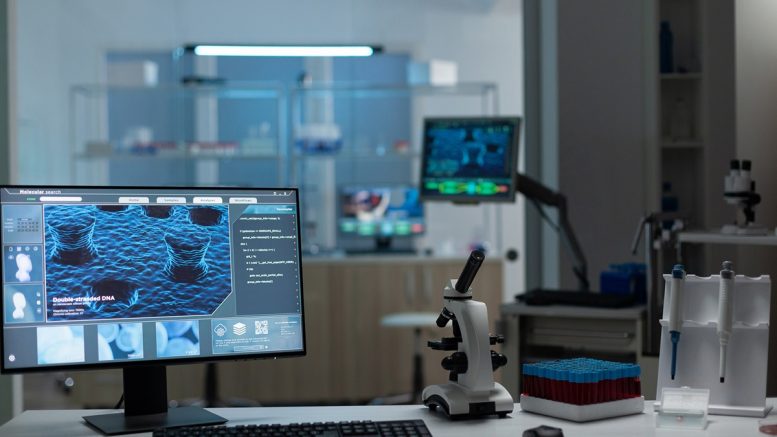Drug research and development can cost up to $6bn per asset and take an average of 13 years from discovery to approval1. In this expensive and complex clinical trial landscape, an industry-wide movement to refocus the patient at the center of the experience has led to more adoption of a hybrid trial approach that leverages precision measures both within and outside of the traditional clinical trial design. Simply put, a precision measures strategy focuses on finding the right measure – one that’s able to capture the meaningful aspect of health – for the right patient population. These measures can be captured from a wide range of assessments such as labs, imaging, real world data, clinical outcome assessments (COAs) and more.
COAs are one element of the precision measures ecosystem, and they can consist of both active and passive data collection methods. Actively-collected COAs, such as patient-reported outcomes (PROs) administered through questionnaires, have a long history of being critical elements to understanding how a patient feels, functions and survives. Newer developments with connected sensors have made passive collection of COAs possible through the use of digital health technologies (DHTs). And while recent regulatory support and guidance for the use of DHTs in drug development2 and digital endpoints3 have been major milestones in the ability to leverage these types of precision measures, the decision making process to develop the appropriate COA strategy for a given trial is time-consuming and labour intensive.
In a recent npj Nature publication4, we proposed that there is enough alignment between actively- and passively-collected COAs to develop a framework to guide researchers in identifying fit-for-purpose assessment types. Our methodology used the ontologies of two databases that already exist in identifying actively and passively-collected COAs, and then reviewing which data elements are the same or similar across the two to allow for clear comparison. Using data elements such as therapeutic area, medical condition, concepts of interest and measures as anchors of this alignment, we propose a novel framework to bring these two previously separate sources into a unified comparison method.
What could adoption of this framework mean for the industry at large?
A dynamic, up-to-date way to compare COAs
A key aspect of the utility of this novel framework is that the data sources in which it is built upon are dynamically updated. With the growing body of relevant literature being published each year, this has immense potential to help alleviate the current burden for researchers during measurement selection. The ability to review available COA types and the evidence supporting their use in a specific population of interest allows for efficient and confident decision making. By illustrating the alignment between different data collection methods based on relevant concepts of interest and measures, researchers have the ability to navigate the large body of literature with ease to quickly identify the measures that truly matter to patients. Once the commonalities across COA types have been established, this framework also allows for review of other key attributes that are unique to both active and passive COAs, such as validation properties, evidence in prior research, copyright and translation options, and data availability. This evidence-based decision-making process streamlines informed decisions and can mitigate the risks of selecting an incorrect endpoint. Minimising the time it takes for just one step of the clinical trial process, such as providing a framework for agile endpoint selection, could ultimately have compounded downstream effects on overall trial efficiency, including reducing study start up time, and ultimately, getting drugs to market sooner.
Efficient protocol development to reduce patient and site burden
Identifying the correct precision measures for a trial can also mean simplifying protocol development and design. In recent years, the amount of endpoints within trials has increased substantially5, and with every additional endpoint, not only does patient burden increase, but so does site burden and risk of incomplete or missing data. Reviewing active and passively-collected COA options simultaneously can create a cohesive schedule of assessments and avoid unnecessary redundancies in data collection.
Another tool in the patient-centric trial toolbox
Overall, this framework can assist the industry on its continued push for more patient-centric trials. Anchoring endpoint selection on the measures that genuinely matter to patients and optimising protocol design for efficiency and ease of use can give researchers confidence in the foundation of their trials. It is our hope that the unified model can also streamline comparison of data and results, which may ultimately have an impact on regulatory approval in passively-collected COA endpoints. Comparison between assessment types may also allow for clearer evaluations of where further alignment is needed on terminology and concepts surrounding precision measures, as well as validation requirements, comparability and acceptability criteria for novel DHTs and digital measures. Understanding when assessment types can be confidently substituted with each other (such as the SV95% and the 6-Minute Walk Test), has the opportunity to empower patients with enhanced flexibility and control over their trial participation.
Future considerations for COAs
We began this work by building on the core elements of actively- and passively-collected COAs; however there are also opportunities to eventually bring in additional congruent fields such as language and geographic availability. Our methodology involved subject matter experts aligning the comparable data elements and reviewing the terminology to ensure consistency and agreement around which fields could be compared, as well as understanding where the values that are unique to each respective assessment type should be retained and evaluated separately.
In the future, we believe this framework has the potential to be extended to additional assessment types that span the entirety of the precision measures ecosystem. From lab and imaging biomarkers to large-scale real world data, anchoring on the measures and patient population can allow for a more optimised protocol development process.
We want to underscore the importance of continuing the conversation for further alignment from additional subject matter experts within the field to ensure scientific validity and utility as the framework evolves.
Allowing flexibility in protocol design for data collection is key for continuing to keep clinical trials patient centric. The ability to provide options to participants has the potential to increase patient diversity, recruitment and retention, data completeness and satisfaction.
Article written by Caprice Sassano, with collaboration from Dr. Roya Sherafat and Marcelo Alves Favaro of MRT.
Caprice Sassano, Research Lead – Applied Sciences at HumanFirst, an ICON company
Caprice Sassano, MPH is a member of the Applied Sciences team at HumanFirst, an ICON plc company. Her work focuses on developing HumanFirst’s precision measures platform Atlas. Prior to her work at HumanFirst, Caprice worked in academic clinical research and was awarded her Masters in Public Health Epidemiology from New York University.
Dr. Roya Sherafat, Scientific Director, MAPI Research Trust
Dr. Roya Sherafat is the Scientific Director at Mapi Research Trust. She works collaboratively with the measurement science experts, clinical scientists and providers to disseminate the science of Clinical Outcome measurement, and facilitate access to these instruments and to promote best practices in COA science. Dr. Sherafat is a trained physician and holds dual PhDs in epidemiology and health policy.
Marcelo Alves Favaro, Associate Outcomes Researcher, MAPI Research Trust.
Marcelo Alves Fávaro is a member of the Patient Centered Endpoint Intelligence team at Mapi Research Trust. Prior to joining Mapi, Marcelo was a post-doctoral researcher at the Institut de Recherches sur la Catalyse et l’Environnement de Lyon. Marcelo holds a PhD in Chemistry with a specialization in Materials Science & Catalysis.
References
- Zhavoronkov, Alex. “$6.16 Billion Per Drug Approval: Almost Half of Big Pharma Companies Hit Negative R&D Productivity.” Forbes, 9 Aug. 2023, www.forbes.com/sites/alexzhavoronkov/2023/08/09/616-billion-per-drug-approval-almost-half-of-big-pharma-companies-hit-negative-rd-productivity/amp/.
- S Food and Drug Administration. Framework for the Use of Digital Health Technologies in Drug and Biological Product Development. https://www.fda.gov/media/166396/download?attachment (2023).
- European Medicines Agency. Draft qualification opinion for stride velocity 95th centile as primary endpoint in studies in ambulatory Duchenne muscular dystrophy studies. https://www.ema.europa.eu/en/documents/regulatory-procedural-guideline/draft-qualification-opinion-stride-velocity-95th-centile-primary-endpoint-studies-ambulatory_en.pdf (2023).
- Campbell, C.M., Webster, C., Parisi, M. et al. An aligned framework of actively collected and passively monitored clinical outcome assessments (COAs) for measure selection. npj Digit. Med. 7, 71 (2024). https://doi.org/10.1038/s41746-024-01068-x
- Tufts Center for the Study of Drug Development. Protocol design scope and execution burden continue to rise, most notably in Phase III. Impact Rep. 25, 1–4 (2023).





